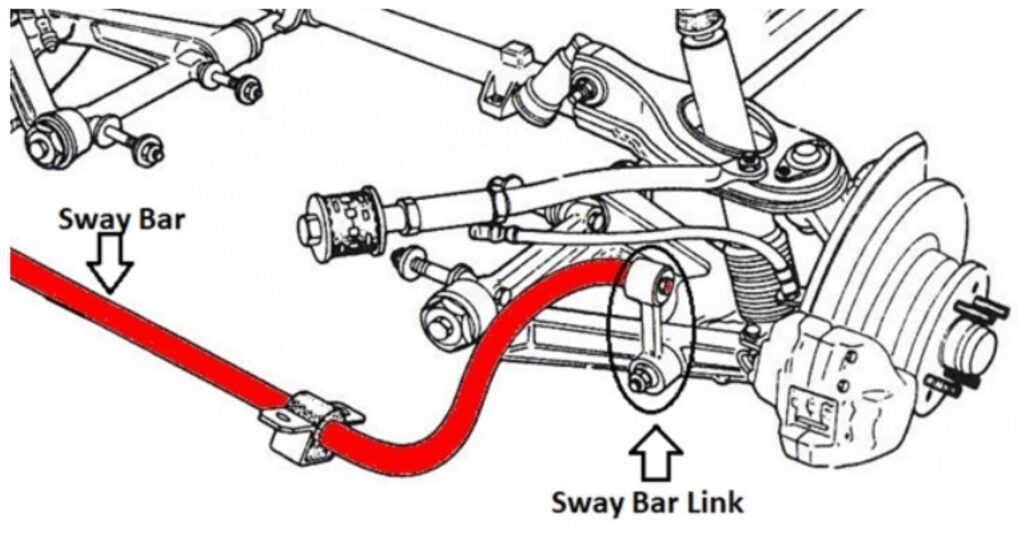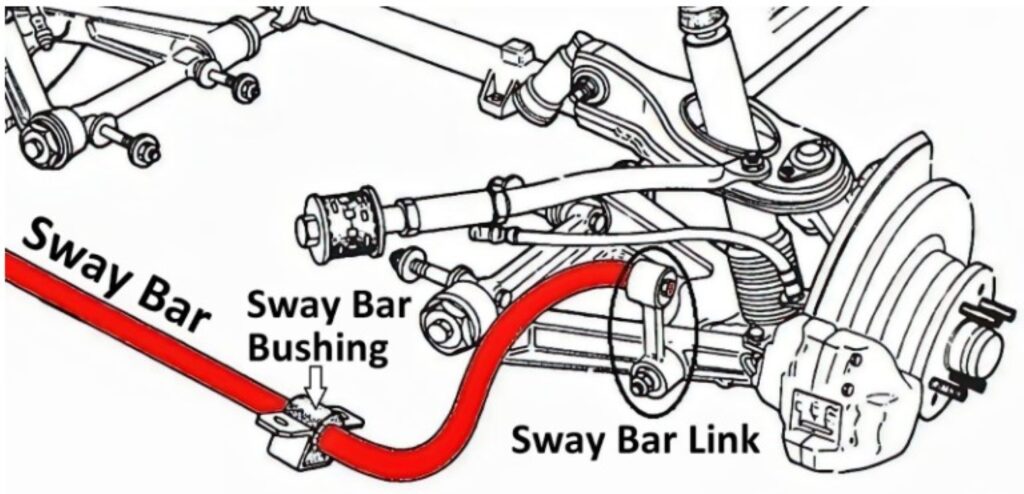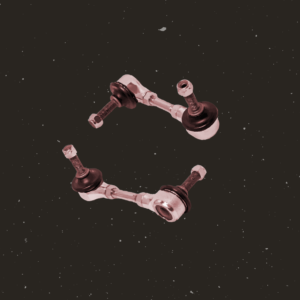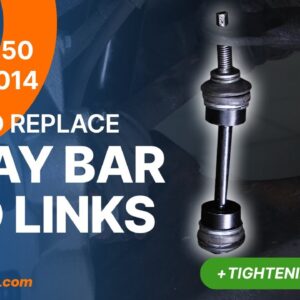Also known as the stabilizer or anti-roll bar, the sway bar is all about controlling body rolls and improving handling. However, it can only do these things when its bushings are in good condition. Sway bar bushings rarely break, but they do wear over time and can get damaged when exposed to engine fluid leaks. If your sway bar bushings are damaged or worn, you’ll have to replace them as soon as possible to keep your suspension in good shape.
What Are Sway Bar Bushings?
A sway bar bushing is one of the most important parts of your vehicle’s suspension. It connects the sway bar to your car’s body or frame and helps reduce noise by isolating the bar from the body when cornering.
Most Original Equipment Manufacturer (OEM) bushings are made of rubber, but some are also made of polyurethane. Poly bushings provide better handling and cornering overall. They also tend to last longer than traditional rubber bushings.
Be sure not to confuse sway bar bushings with sway bar links, which connect the sway bar to your vehicle’s control arm or strut.

When To Replace Your Sway Bar Bushings
Most sway bar bushings constantly take a beating when you drive over potholes and uneven surfaces, so it’s no surprise that their rubber material tends to degrade quickly. Here are a few signs that’ll tell you when it’s time for a sway bar bushing replacement:
Clunking Noise
Have you noticed a clunking noise when driving over potholes and speed bumps recently? If the answer’s yes, then you might be in need of new bushings for your sway bar. Knocking or rattling noises can also point to damaged sway bar links, so be sure to thoroughly inspect your suspension system before replacing any parts.
Squeaking Noise
In some cases, you might hear a strange squeaking noise due to a faulty bushing. Some sway bar bushings need to be lubricated every now and then. When they dry and wear, they tend to make squeaking noises.
Cracks and Tears
You can also perform a visual inspection if you still aren’t sure about replacing your sway bar bushings. Damaged bushings tend to look dried out with cracks and tears in the rubber. Look for other subtle signs as well, such as a worn inner edge.

How To Replace Sway Bar Bushings
Replacing sway bar bushings is a relatively straightforward job that you can do on your own. Here are a few tips on how to install new sway bar bushings:
Measure the Sway Bar Size
Before you begin, consider measuring the size of your sway bar or checking your owner’s manual for more information. Some manufacturers tend to install different sizes even for the same model year, so it’s best to check just to be 100% sure.

Prepare the Necessary Tools
You’ll save yourself a lot of time and effort by preparing all your tools before you start. Prepare your brand-new bushings, toolbox, wire brush, and grease. You can also lay down a cardboard box or old towel on the floor, just so you aren’t lying down on the garage floor as you work.
Raise the Front of the Vehicle
Time to prepare your vehicle. Park in a safe and secure location, preferably in your garage, and then raise the front of your car. Make sure it’s properly supported, so it doesn’t move when you get to work.
Remove the Frame Mounts (only if necessary)
On some front-wheel drive (FWD) vehicles, the mount is secured with a single nut or bolt on one side and a tab or clip on the other. Carefully remove the frame mount by unscrewing the nut or bolt before sliding the bushings off the bar.
Clean the Bar and Mounts
It’s time to clean the sway bar and mounts with a wire brush. Be as thorough as possible. If you’re having a hard time getting rid of any dirt or debris, you can try using sandpaper instead.
Grease and Reattach the Parts
Once the parts are nice and clean, you can go ahead and lightly grease them. Be sure to use silicone-based grease as petroleum-based grease can cause rubber bushings to wear faster.
Once the bar, bushings, and mounts are greased enough, slide the bushing over the bar. Then, reattach the mount while making sure to torque the nuts or bolts according to your manufacturer’s recommendations.
Can You Drive With Damaged Sway Bar Bushings?
While your vehicle can still run with a damaged sway bar bushing, it’s a bad idea to do so. Sway bars ease a lot of body roll whenever you turn your vehicle, and if it isn’t properly connected to your vehicle’s body due to a worn bushing, your car is likely to tilt more. You could end up crashing into another vehicle when turning, or worse. As soon as you notice any wear on your sway bar bushings, avoid driving until you can replace them.
Sway Bar Bushings Replacement Cost
The final price of sway bar bushings will vary depending on a few factors, such as your vehicle’s year, make, model, and the product’s brand. On average, however, you can expect to spend anywhere from $10 to $170.
Where to Get a New Sway Bar Bushing for Your Vehicle
If the troublesome noises you’re hearing are coming from a faulty sway bar bushing, it’s time to purchase a replacement. Otherwise, you’ll be plagued by the clunking or squeaking sounds, and your vehicle’s sway bar might wear down faster as the problem worsens. Thankfully, you can purchase a replacement sway bar bushing at CarParts.com.
CarParts.com has a large catalog filled with quality parts from trusted manufacturers. Browsing through the many sway bar bushings is easy. Just enter your ride’s details into our vehicle selector to find a set that fits both your vehicle and your needs. We offer these bushings at various price points to suit as many budgets as possible. Whatever the price, you can trust that our bushings are durable and worth your hard-earned cash.
Don’t drive with a bad bad sway bar bushing. Purchase a replacement sway bar bushing from CarParts.com today.
Any information provided on this Website is for informational purposes only and is not intended to replace consultation with a professional mechanic. The accuracy and timeliness of the information may change from the time of publication.






























